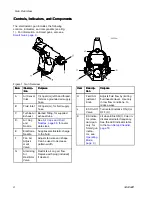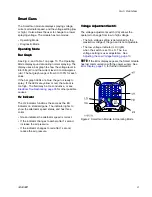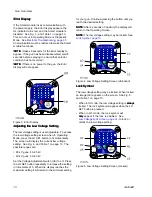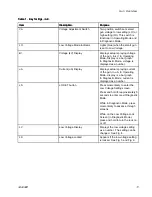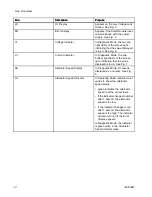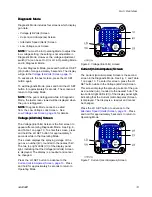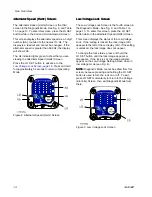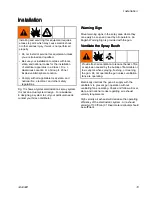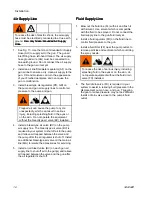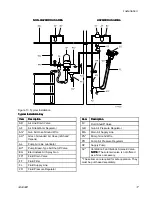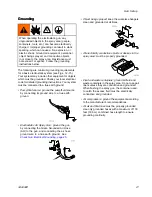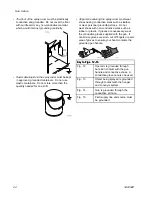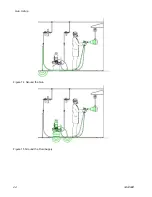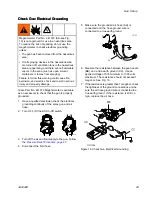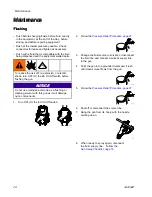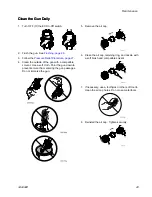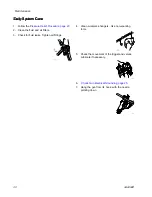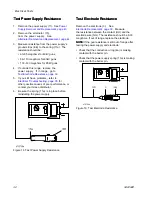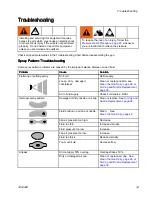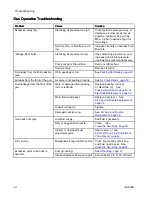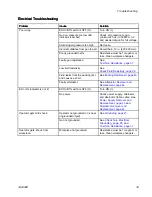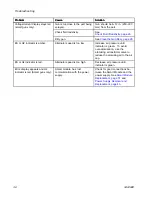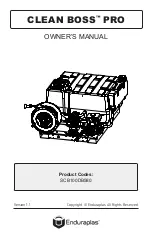
Gun Setup
Grounding
Grounding
Grounding
When operating the electrostatic gun, any
ungrounded objects in the spray area (people,
containers, tools, etc.) can become electrically
charged. Improper grounding can result in static
sparking, which can cause a fire, explosion, or
electric shock. Ground all equipment, personnel,
object being sprayed, and conductive objects
in or close to the spray area. Resistance must
not exceed 1 megohm. Follow the grounding
instructions below.
The following are minimum grounding requirements
for a basic electrostatic system (see Figs. 12–15).
Your system may include other equipment or objects
which must be grounded. Check your local electrical
code for detailed grounding instructions. Your system
must be connected to a true earth ground.
•
Pump/fluid source:
ground the pump/fluid source
by connecting its ground wire to a true earth
ground.
•
Electrostatic Air Spray Gun:
ground the gun
by connecting the Graco Grounded Air Hose
(AH) to the gun, and connecting the air hose
ground wire to a true earth ground. See
Check Gun Electrical Grounding, page 25
.
•
Object being sprayed:
keep the workpiece hangers
clean and grounded at all times.
•
All electrically conductive objects or devices in the
spray area:
must be properly grounded.
•
Fluid and waste containers:
ground all fluid and
waste containers in the spray area. Do not use pail
liners unless they are conductive and grounded.
When flushing the spray gun, the container used
to catch the excess fluid must be electrically
conductive and grounded.
•
Air compressors:
ground the equipment according
to the manufacturer's recommendations.
•
All air and fluid lines
must be properly grounded.
Use only grounded hoses with a maximum of 100
feet (30.5 m) combined hose length to ensure
grounding continuity.
3A2494D
21


